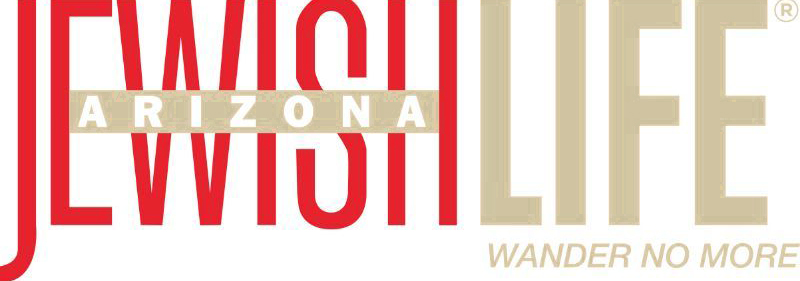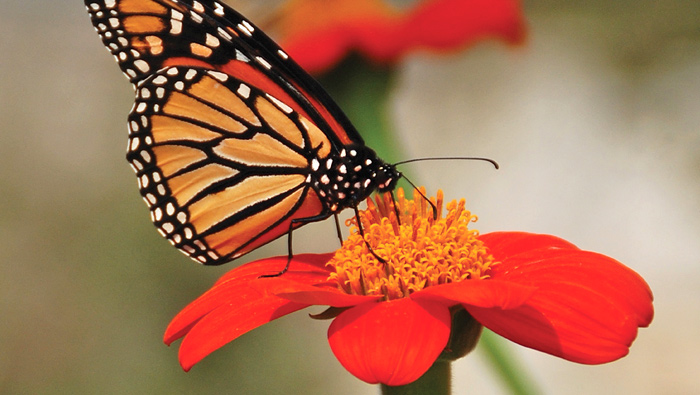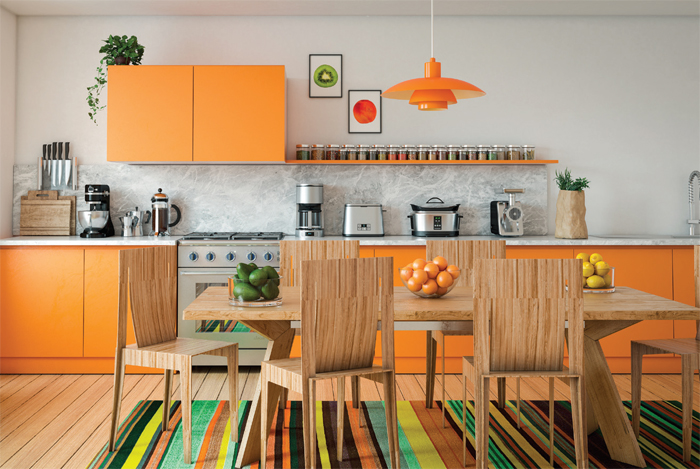These essential members of our ecosystem are responsible for much of the food and beauty we enjoy each day.
Unfortunately, pesticides and habitat loss are threatening their existence, but there is something you can do to help. Turn your garden, backyard or balcony into a pollinator’s habitat.
Choose a variety of flowering plants that provide nectar and pollen throughout the season. Planting herbs such as thyme, lavender and rosemary will get you off to a good start. Then go wild with masses of natives such as blanket flowers and other pollinator favorites like barrel and saguaro cactus, Arizona poppy, sage, cosmos, desert honeysuckle, zinnias and sunflowers to attract these beauties to your landscape. Include a variety of day- and night-blooming flowers in a variety of colors and shapes to support the widest range of pollinators. And don’t let a lack of space dissuade you; even a window box of flowers can help.
Keep your plants healthy and blooming with proper care. Match the plants to the growing conditions, provide needed water and fertilize with an organic nitrogen fertilizer such as Milorganite when needed. You’ll promote slow, steady plant growth that is less susceptible to drought and pests. Plus the slow-release low nitrogen won’t interfere with flowering, which is essential to the health and well-being of our pollinators.
Supplement pollinators’ diets with a bit of rotten fruit. And be sure to provide trees and shrubs like willow and false indigo, herbs like dill and fennel, and other plants that caterpillars, grubs and the immature stages of other pollinators prefer to feed on. Put away the pesticides and tolerate a few holes in the leaves of their favorite plants. With a diversity of plants you can easily overlook the temporary leaf damage. Plus, this is a small price to pay for all the benefits they bring to the garden.
Provide pollinators with shelter from predators and the weather. Include a variety of trees, shrubs and perennials. Leave patches of open soil for ground-nesting bees and some leaf litter to shelter some butterflies, bumblebees and other pollinating insects. Supplement natural shelter with commercial or homemade nesting boxes. You’ll find do-it-yourself plans on the Internet from various educational sources.
Puddles, fountains, birdbaths and even a damp sponge can provide needed water. Include water features with sloping sides or add a few stones to create easier access. Or sink a shallow container of sand in the ground. Keep it damp and add a pinch of sea salt for the butterflies and bees.
Maximize your efforts by teaming up with your neighbors. Together you can create a larger, more diverse habitat that provides pollinators with the resources they need to thrive.
Your efforts will be rewarded with greater harvests, beautiful flowers, and colorful birds and butterflies visiting your garden.
Gardening expert, TV/radio host, author and columnist Melinda Myers has more than 30 years of horticulture experience and has written more than 20 gardening books, including Small Space Gardening. She hosts the nationally syndicated “Melinda’s Garden Moment” TV and radio segments. Myers is also a columnist and contributing editor for Birds & Blooms magazine. melindamyers.com






